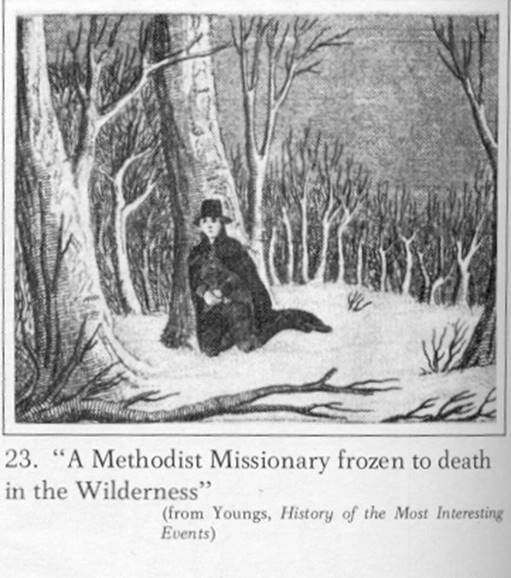Grace for Clergy
 Clergy health and well-being have been career-long interests for me. About 25 years ago, I explored the question as to why so many early Methodist circuit riders died or dropped out of ministry prior to their thirtieth year. I read more than 20 journals of 19th century Methodist itinerant preachers who lived long enough to write about their ministry. Many of those men wrote journals to supplement their sub-poverty income after ending their active ministry, often with broken health.
Clergy health and well-being have been career-long interests for me. About 25 years ago, I explored the question as to why so many early Methodist circuit riders died or dropped out of ministry prior to their thirtieth year. I read more than 20 journals of 19th century Methodist itinerant preachers who lived long enough to write about their ministry. Many of those men wrote journals to supplement their sub-poverty income after ending their active ministry, often with broken health.
There were two factors the journalists often mentioned regarding what drove them. One factor was that they were soldiers in God’s army battling against the devil; the devil never sleeps and neither could they. The other factor was this: while they preached a gospel of grace, they did not see that grace applied to them, too. They feared that, if they dropped out of ministry shy of using every once of their strength in that ministry, the gates of heaven would be closed to them.
During October when some traditions honor the work of ministry, and if you are a congregant or a friend of a member of the clergy, would you please extend a bit of grace to them?
These last few years has been tough on so many professions, none more than on anyone whose job is to care for someone else or to keep us all supplied with the necessities of life. The pandemic affects all of us. But that pandemic hit as social tensions rose to an unsustainable level; and the way the pandemic has been addressed by everyone from government officials to furious parents de-masking teachers is evidence the tensions have not diminished. Teachers, school boards, service providers, and hospital staffs continue to be painfully stretched.
So, I’m not claiming any special pain for clergy in these distressing times. This blog is simply a plea to consider what these times have meant for them. And give them some grace.
Religion in the Western world was already in the midst of what the late Phyllis Tickle wrote was an every 500 year upheaval. The interior meanings and the exterior forms of religion are fundamentally changing. Profound changes (e.g., technology in worship, the meaning of doctrine) were already evident. America has been de-congregating since the early 1960s.
The kind of churches for which I was prepared to minister in 1981 when I graduated seminary are now but shadows. The rules of advancement in the profession are gone; I don’t think there is anything today that resembles a career path in ministry. This fact is a tremendous burden on young clergy with thousands in educational debt.
In the 1950s, denominational officials needed plant managers. In the 1980s, family systems thinkers and innovators. Today, new clergy should be the equivalent of survivalists who know how to re-purpose, imagine, and persist.
The pandemic is surely accelerating change. All the articles I’m reading assert that work spaces will never be the same again. How about worship spaces? What has technology enabled for which we should rejoice? And what has technology made possible that might tear even more holes in the social fabric, including the fabric of our beloved communities?
As I wrote above, social tensions were at an unsustainable level before the pandemic hit. In terms of the social energy in American politics and public life, nothing has really changed since January 2021. Congress is not more civil or productive. Fear of one’s constructed “other” has not lessened.
The 2022 mid-term elections will continue the battle for America’s soul and story, as well as whether or not democratic dreams of freedom and equality are in our rear view mirror or ahead of us. Plus, the nation has passed more than 700 thousand dead from the pandemic. Many times that number are grieving the death of their loved one or the long-term mental, spiritual, and physical consequences of their own bout with the disease. The pastoral care burden of all of this is enormous.
Many congregations are not solidly Red or Blue but Purple or, rather, a salad bowl of Red and Blue. Purple sounds like there is a middle ground; God help those who try to fashion a middle ground! Some clergy have been assailed by parishioners for following CDC guidelines because vaccines and masking, or not, have risen to the level of political identity. While every major Christian denomination has official statements on the sin of racism, some white persons feel judged when the subject is openly discussed in sermons and educational offerings.
One might say this is evidence of “white fragility.” Granted. But for the clergy, such people are a pastoral care challenge and obligation, the kind that weigh heavily on their shoulders. For clergy who serve congregations always under the siege of racism, their stress is unrelenting. Some clergy are well-differentiated, emotionally very mature persons who are able to choose their responses rather than react when triggered and tensions build. But others of us functioned in our families and function in our congregations like toxic sponges. The toxins have been too much to handle.
For clergy, the combination of extreme social tensions and the challenges of the pandemic reveal conflict over the very nature and purpose of religious communities, as well as what those communities contribute to or withdraw from the social fabric. In addition, the widespread evidence that, no, we do not act like “we are all in this together” and that “love your neighbor” is, in American practice, a moot moral injunction for an alarming percentage of our neighbors, calls into question the influence all of our religious congregations have on social behavior.
In theological terms, grace is a healing expression of God’s love. When you have a chance, please extend grace to the clergy. And clergy, please accept grace for yourselves.
Dr. Gary Peluso-Verdend is president emeritus at Phillips Theological Seminary and is the executive director of the seminary’s Center for Religion in Public Life. The opinions expressed in this blog are those of the author. Learn more about the Center’s work here and about Gary here.


Comments are closed.